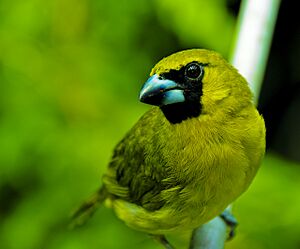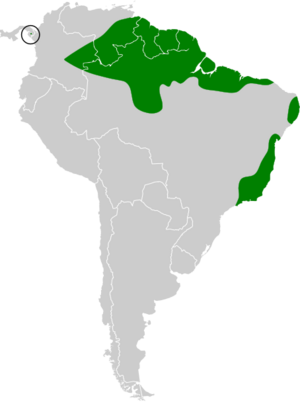Yellow-green grosbeak facts for kids
Quick facts for kids Yellow-green grosbeak |
|
|---|---|
 |
|
| Conservation status | |
| Scientific classification | |
| Genus: |
Caryothraustes
|
| Species: |
canadensis
|
 |
|
| Synonyms | |
|
Loxia canadensis Linnaeus, 1766 |
|
The yellow-green grosbeak (Caryothraustes canadensis) is a type of bird. It belongs to the grosbeak group, which is part of the Cardinalidae family.
How This Bird Got Its Name
Scientists give every living thing a special two-part name. This is called a binomial name. It helps everyone know exactly which plant or animal they are talking about.
Back in 1760, a French scientist named Mathurin Jacques Brisson wrote about the yellow-green grosbeak. He saw a bird from Cayenne in French Guiana. He gave it a French name, Le Gros-bec de Cayenne.
Later, in 1766, a famous Swedish scientist named Carl Linnaeus updated his book, Systema Naturae. He added many new species, including this grosbeak. Linnaeus gave it the scientific name Loxia canadensis.
However, Linnaeus made a small mistake! He thought the bird came from Canada, not Cayenne. That's why the name canadensis (meaning "from Canada") was used. But this bird does not live in Canada.
Today, the yellow-green grosbeak is placed in the genus called Caryothraustes. This genus was named by a German scientist, Ludwig Reichenbach, in 1850. There are four different types, or subspecies, of the yellow-green grosbeak.
Where It Lives
The yellow-green grosbeak lives in several countries in South and Central America. You can find it in Brazil, Colombia, French Guiana, Guyana, Panama, Suriname, and Venezuela.
These birds like to live in habitats that are warm and wet. Their favorite places are lowland forests that get a lot of rain. They can also be found in areas where forests used to be, even if they are now changed by people.


